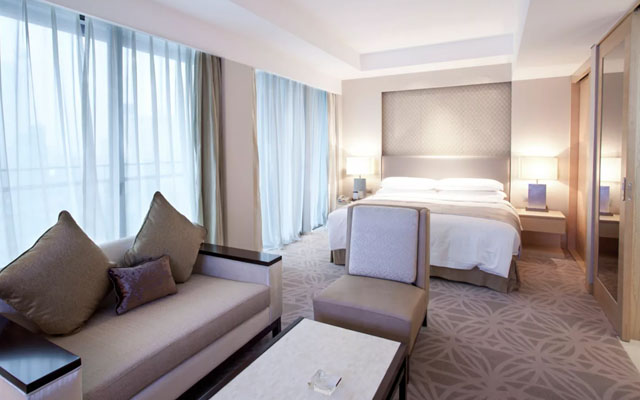ASEAN wants more tourism growth, even though its infrastructure is bursting at the seams. Raini Hamdi listens to the issues

(From left) Moderator Linda Yueh, Thai tourism & sports minister Kobkarn Wattanavrangkul, ICAO’s Arun Mishra, Philippine tourism secretary Wanda Corazon Teo and Indonesia’s tourism minister Arief Yahya, at WTTC Global Summit 2017
While nationalism and protectionism have crept up in the West, it’s just the opposite in ASEAN where the vision of a single market by 2025 remains a deep-seated desire of the 10 countries that make up the bloc.
Some progress has been seen in areas such as visas and travel connectivity that benefit travel & tourism, a huge income earner for ASEAN, but much remains to be done.
A session entitled ‘Freedom to travel – can ASEAN lead the way?’ during the recent WTTC Global Summit in Bangkok had the public sector showing why it’s complicated.
Firstly, a friendly reminder. Although ASEAN is 50 years old this year, ASEAN tourism feels more like 15 years old, said Thai tourism & sports minister Kobkarn Wattanavrangkul, alluding to a relatively young industry that has seen faster growth than it can cope with.
It takes time and patience to iron out the ruffles. Take visas for example. A single visa to visit ASEAN is “not easy” to achieve, she admitted. In Thailand, that would involve many ministries including foreign affairs, the interior/immigration bureau, National Security Council, to name a few.
And while Thailand may grant a visa, others in the bloc may not, and fees for visas vary.
“How to manage?” she said.
Arief Yahya, Indonesia’s tourism minister, however, demonstrated why visa easing is important for tourism growth, using his country as an example.
Indonesia grants visa-free entry to 169 countries, the largest number in the world, he said. It wasn’t always this liberal. In 2014, Indonesia gave visa-free entry only to 15 countries, compared with Singapore (155 countries), Malaysia (163) and Thailand (57). “(Our figure) was so low then. We increased visa-free (entry) in three stages, from 15 to 45, then 90 and now 169,” he said.
“This is a very effective policy (to attract international tourists). The growth of visitors from new visa-free countries is on average 20 per cent, the lowest being 12 per cent and the highest 50 per cent. And for those countries that record the lowest increases, less than 100 arrivals, we are proposing for the government to change them from visa-free to visa-on-arrival,” he added.
Another area where the region still lags is a real single ASEAN skies, pointed out Arun Mishra, regional director, International Civil Aviation Organization (ICAO) Asia & Pacific Office.
ASEAN is taking a bold step towards a single aviation market, comparable to the EU. As seen, the EU’s move has resulted in improved connectivity and increased competition in its skies.
“However, ASEAN single skies is not as single as in the EU,” said Mishra. “This is because they (ASEAN countries) are still not decided on the seventh freedom – the ability of airlines to go from one foreign hub to another. This is why many airlines, such as AirAsia, have to go to the individual countries and form joint ventures with the local partners.
“For ultimate connectivity, ASEAN must allow the seventh freedom, then airlines can become regional, ticket prices will come down and they can compete better with airlines from Europem, China and India.”
But infrastructure investment is where progress is most needed in ASEAN, an instant poll of the audience showed (51 per cent). Combined with regulations (22 per cent), which investment depends on, it’s by far the biggest issue.
Mishra believes aviation infrastructure should come first. “Although ASEAN develops maritime and tourism infrastructure, aviation is the mainstay to move people. Look at the congestion at Soekarno-Hatta, or at (Ninoy Aquino) – new terminals and runways were needed yesterday.
“While we’ve had ASEAN free skies, airlines are not able to take advantage of it because there are no slots. Another concern is the air navigation system, modern equipment and technology. (ASEAN) states need to act fast.”
He also added more training facilities to the long list. “While we chase growth, suddenly we don’t have the people to manage this growth,” he said. “Mobility of qualified personal is restricted in ASEAN.”
Indonesia’s Arief said foreign direct investment is needed for infrastructure development; his government could fill only a third of the funding requirement. But even before the funding issue, regulations have to be improved, he pointed out.
“The ease of doing business is low in development countries, especially in getting permits. In this case, we need to improve the regulations first before infrastructure development can happen.”
It’s complicated.




















